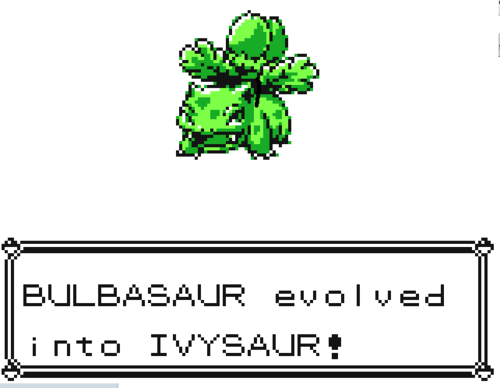
When Pokemon participate in battle, an adrenaline-like response kicks in, allowing the use of combat abilities like summoning lightning or breathing fire. As this happens, Pokemon exude large amounts of radiation. Their adrenal response also leaves them susceptible to radiation exuded by opposing Pokemon during combat. This radiation causes Pokemon to mutate, and the extent of these mutations is proportional to the strength of the opponent. Face a terrifyingly-strong opponent, and high radiation levels and increased susceptibility will lead to rampant mutations. Weaker foes, conversely, will have little impact on a Pokemon's physique.
These mutations cumulatively add to a Pokemon's strength, and sometimes manifest themselves in the form of increased abilities or appendages. For example, Bulbasaur might sprout some vines, allowing it to use the move Vine Whip. Other times, the mutation is more drastic, causing a Pokemon to mutate into an entirely new form. (Also known as evolution)
Although "leveling up" is the usual way for Pokemon to evolve or learn new skills, there are also artificial stimulants that can be used to enhance a Pokemon's combat abilities. You can call them "performance enhancing drugs" if you like, but "Technical Machine" also works. Evolution stones are just high concentrations of chemicals that cause certain Pokemon to mutate.
No comments:
Post a Comment